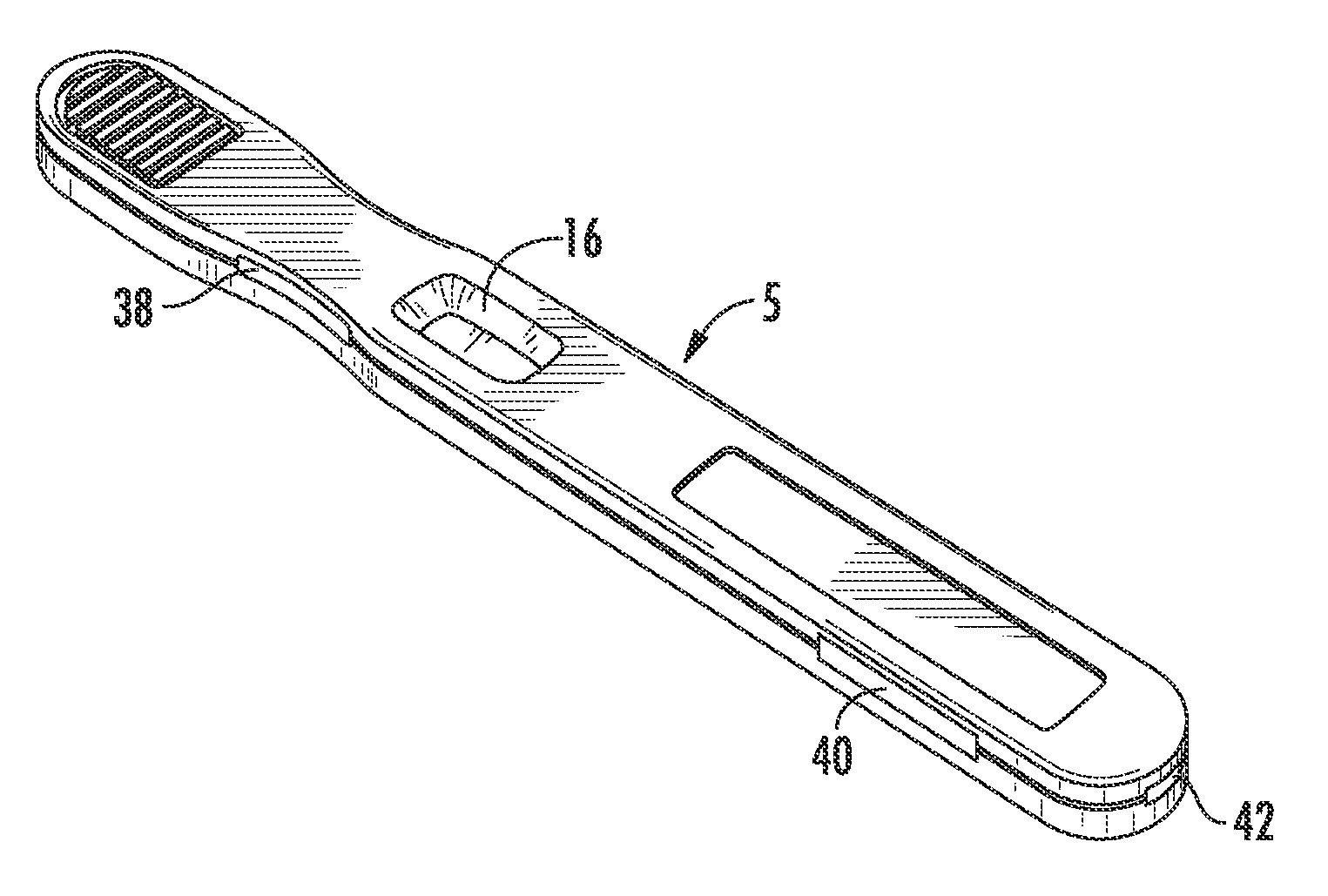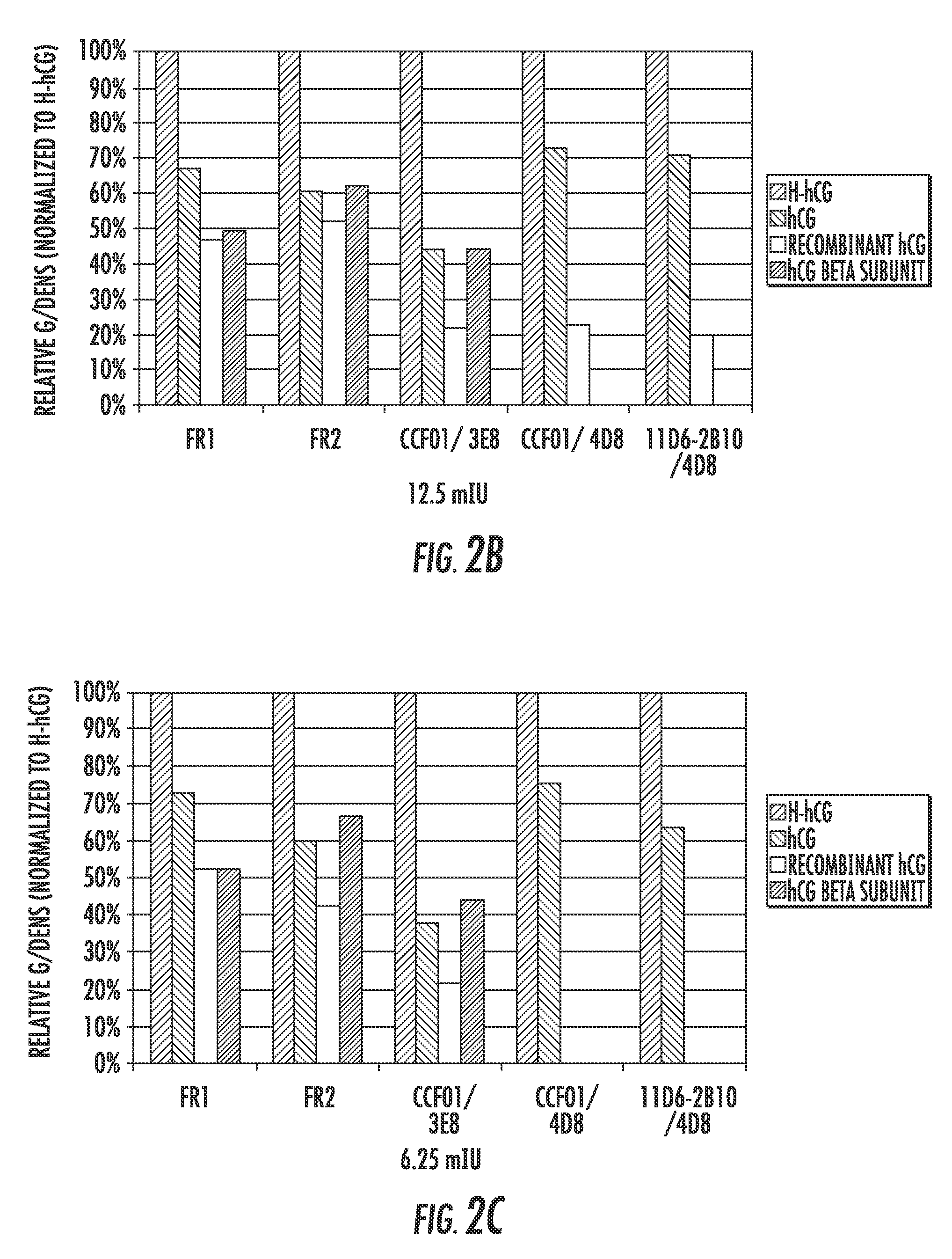Hyperglycosylated hCG detection device
a detection device and hyperglycosylated technology, applied in the direction of chemical methods analysis, chemical indicators analysis, instruments, etc., can solve the problems of early pregnancy loss, failure of destine pregnancy, and inability to ensure so as to achieve high affinity, confirm the viability of pregnancy, and high the effect of success
- Summary
- Abstract
- Description
- Claims
- Application Information
AI Technical Summary
Benefits of technology
Problems solved by technology
Method used
Image
Examples
example
[0156]A series of experiments were conducted to assess the relative affinities of the SMA4D8 and SMA3E8 antibodies. Both antibodies were analyzed by Biacore (GE Healthcare) and Enzyme-Linked ImmunoSorbent Assay (“ELISA”).
[0157]Biacore is an instrument that helps analyze antibody—antigen interactions in terms of specificity, kinetics and affinity. Biacore exploits the phenomena of Surface Plasmon Resonance (“SPR”). Biacore allows the label free study of biomolecular interactions. More specifically, an antigen is coated onto a Biacore chip, and the relative affinities of different antibodies are probed in equilibrium. For instance, an antigen can be attached to the surface of a chip and a sample containing an antibody can be passed over the surface of the chip to evaluate the interaction between the antigen and antibody.
[0158]The ELISA is a multiwell plate assay that utilizes antibodies to detect the presence of an antigen in a sample. The ELISA assay allows ‘antigen fingerprinting’ t...
PUM
| Property | Measurement | Unit |
|---|---|---|
| molecular weight | aaaaa | aaaaa |
| weight | aaaaa | aaaaa |
| incubation time | aaaaa | aaaaa |
Abstract
Description
Claims
Application Information
 Login to View More
Login to View More - R&D
- Intellectual Property
- Life Sciences
- Materials
- Tech Scout
- Unparalleled Data Quality
- Higher Quality Content
- 60% Fewer Hallucinations
Browse by: Latest US Patents, China's latest patents, Technical Efficacy Thesaurus, Application Domain, Technology Topic, Popular Technical Reports.
© 2025 PatSnap. All rights reserved.Legal|Privacy policy|Modern Slavery Act Transparency Statement|Sitemap|About US| Contact US: help@patsnap.com



